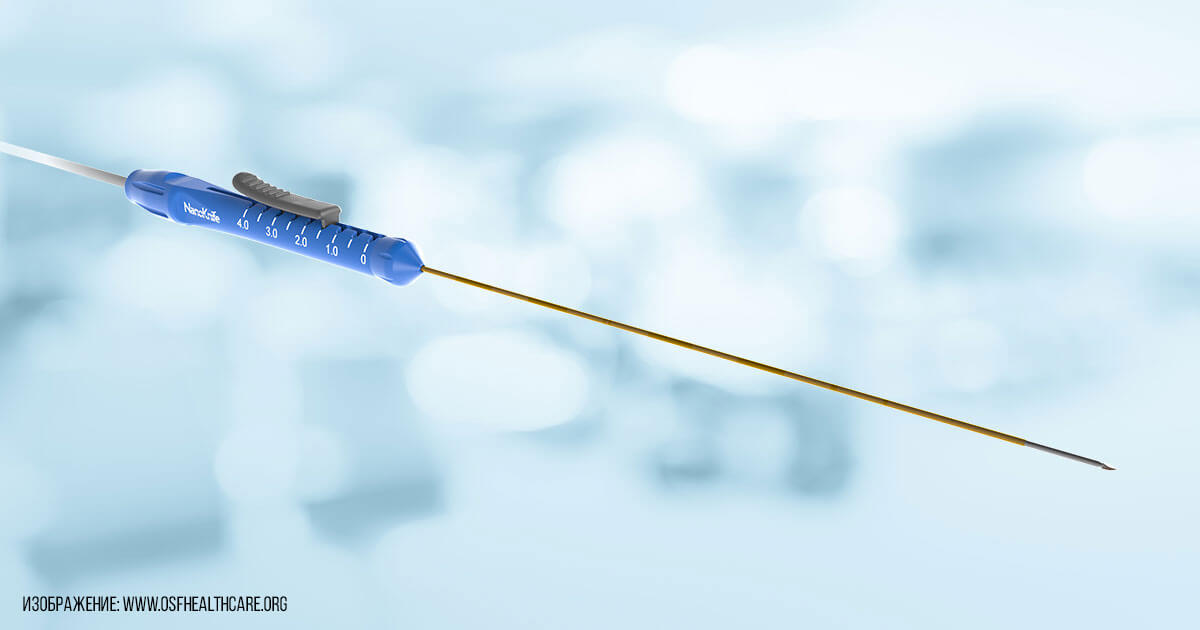The pancreas is an organ that is adjacent to many vital tissues and vessels in the body. Pancreatic cancer is among the most dangerous types of cancer because of the rapid spread of the tumor into surrounding tissues and vessels. When diagnosed with cancer, 85% of pancreatic cancer patients have no chance of surgery. Nano-knife ablation (irreversible electroporation) is a new source of hope, especially for this group of patients.
What is Nanoknife IRE therapy for pancreatic cancer?
Ablation is the destruction of tumor tissue using special needles. For this purpose, heating methods such as radiofrequency, laser and microwaves or cooling methods such as cryoablation are applied. These have been used successfully to treat many organs, especially the liver and lungs, for years. However, such "thermal" ablation methods are not effective enough in organs such as the pancreas and can damage the pancreatic bile ducts around the tumor, as well as the stomach and intestines. Nano-knife ablation, on the other hand, causes no such problems because it uses straight electric current instead of heat to kill the tumor.
What are the benefits of Nanoknife IRE therapy for pancreatic cancer?
In many experimental studies and applications performed on thousands of patients, it has been shown that nanotube ablation does not damage blood vessels and bile ducts, kills tumor tissue around the vessel, and does not cause significant damage to organs in the gastrointestinal tract. With these characteristics, the nano-knife is accepted as the most suitable method for removing pancreatic cancer at the present time.
How is Nanoknife IRE therapy used in pancreatic cancer?
After the patient receives general anaesthesia, an exploratory laparotomy is performed with an incision made from the midline, after the necessary preparation by the surgical team. By exposing the pancreas and the tumor, the area is ready for the application of the nano knife. The interventional radiology team is then involved in the surgery. Through ultrasound, the borders of the tumor, vessel and duct are determined. Subsequently, several needles are inserted into the tumor. The needles should be placed along the edges of the tumour, parallel to each other, with a distance of no more than 2 cm between them. Once the needles have been properly inserted with ultrasound, a very high electric current (up to 3000 volts/50 amps) is delivered to the needles in groups of two and the tumor cells are killed without being destroyed. In this tissue death, called apoptosis, unlike the tissue death (necrosis) that occurs with other ablation methods, the cells lose their vitality but do not fragment. Because the structure of the cells is preserved, no permanent damage occurs in tissues such as vessels, nerves and intestines.
Frequently Asked Questions about NanoKnife in Pancreatic Cancer
Which group of patients would benefit most from nanoKnife treatment?
NanoKnife ablation is a method that can destroy tumors in this area without causing permanent damage to blood vessels, bile and urinary tracts, and nerves throughout the body. With these properties, it has been used primarily in pancreatic, bile duct and prostate cancers, but research continues in other cancers. In pancreatic cancer, which is one of the most important areas of use of the method, the most suitable group of patients are those who do not have distant metastases but cannot undergo surgery because the surrounding vessels are affected.
What is the effect of nanocarrier treatment on quality and length of life in pancreatic cancer?
In patients with locally advanced pancreatic cancer, the nano-knife can kill surrounding tumor tissue without damaging affected vessels and make patients suitable for repeat surgery or shrink the tumor and increase their life expectancy.
For more information, we at Medical Karaj are at your service.
Call us on the following numbers "Medical Karaj": 0879 977 401 or 0879 977 402.
Also keep an eye on our constantly updated Facebook content.



